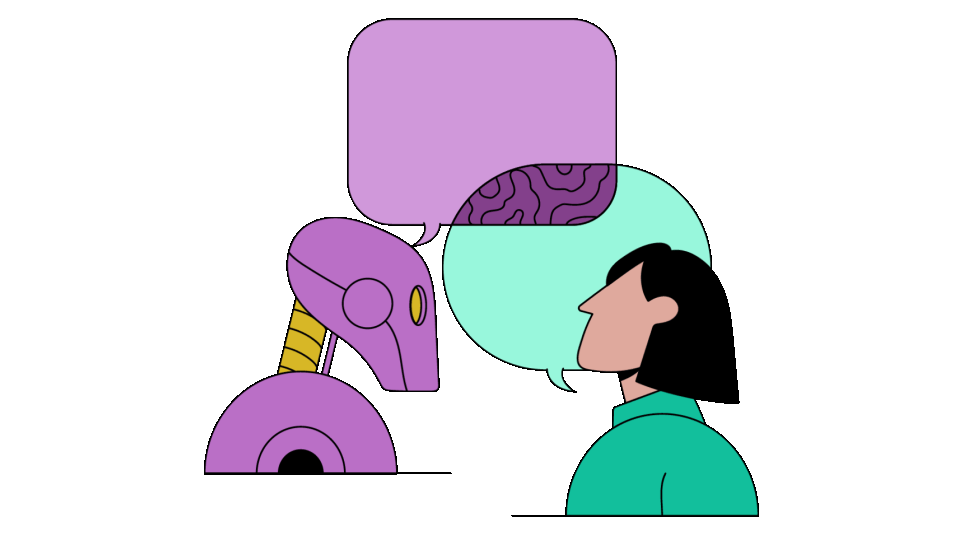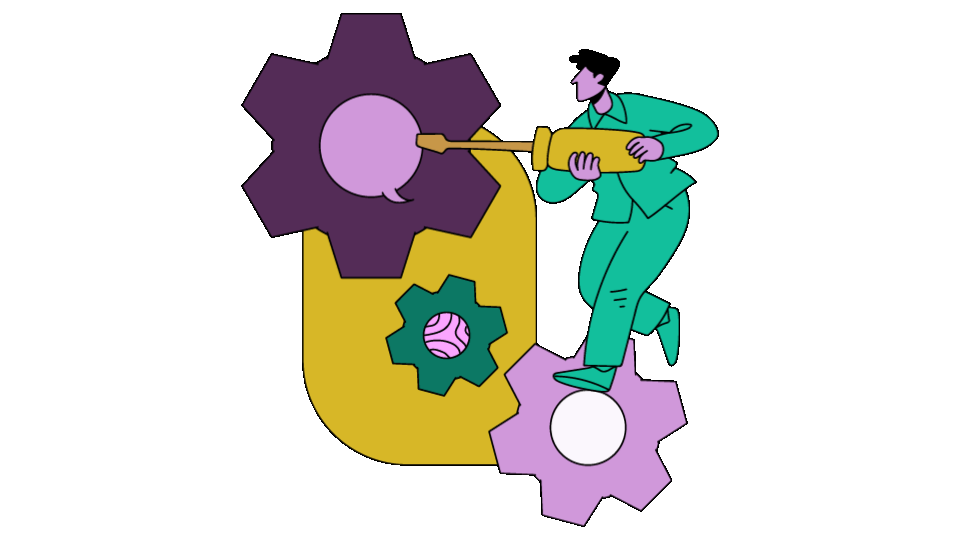GEO and AEO: how to optimise your content for AI search systems

GEO and AEO: how to optimise your content for AI search systems

AI has rewritten the search rulebook — digital publishers and content marketers need to keep up.
by Sophie Venz
Thanks to generative AI, a completely new search discipline is emerging: generative engine optimisation (GEO), also known as answer engine optimisation (AEO).
Traditional SEO focuses on climbing Google's blue links. In GEO, content is optimised to increase its likelihood of appearing in AI results found on Google’s AI Overviews, ChatGPT, Perplexity, and Microsoft Copilot.
But where do you even start?
Let’s take a deep dive into how to utilise GEO practices for your benefit. We’ll cover:
Start creating with Shorthand
It's the fastest way to publish beautifully engaging digital magazines, reports, internal comms, and more.
Why is it important to optimise for AI search?
Thanks to AI search tools — in particular the AI Overviews introduced on Google in late 2024 — publishers are now seeing click-through rates as low as 1%, according to data from Pew Research Centre. This is undoubtedly a concern for content marketers looking to stay ahead of the page performance game.
If users can get the information they require from the summary without visiting the web page itself, then advertising revenues and other metrics reliant on click-through rates could falter. So unfortunately, lower click-through rates may not be the end of the pain for publishers.
Finding yourself placed in an AI overview can significantly increase your brand visibility, and encourage the user to dig-deeper into the content they have searched.
“In fact, if you put content and links within AI Overviews, they get higher clickthrough rates than if you put it outside of AI Overviews,” Google’s CEO Sundar Pichai claims.
AI search is here to stay
As the internet changes, so does the way we use it. A Salesforce survey found that 70% of Gen Z already use AI to learn new things, understand complex topics, and make informed decisions — and that more people would use the technology if they understood it better.
How it works
Let’s take a look at ChatGPT, for example. Many people believe that ChatGPT can scrape the internet itself; however, this is not exactly how it works. Instead, given the correct prompts, ChatGPT generates code that will analyse and process data that has already been scraped on Microsoft Bing’s search index.
This means that ChatGPT will surface relevant webpages according to the prompts received, and fetch the content from these webpages to then extract specific data elements. The intelligence software then determines the most relevant information to provide in its response, which is usually based on the most up-to-date content it finds along with relevant keywords.
So what does this mean for marketers when looking to produce and structure content to be served in AI-generated search results? As we'll see below, it means writing clear copy, keeping it fresh, structuring it for summarisation, and avoiding keyword stuffing.
But first, an explanation of off-page traditional SEO levers that are more important than ever in the AI search era.



Why is it important to optimise for AI search?
Thanks to AI search tools — in particular the AI Overviews introduced on Google in late 2024 — publishers are now seeing click-through rates as low as 1%, according to data from Pew Research Centre. This is undoubtedly a concern for content marketers looking to stay ahead of the page performance game.
If users can get the information they require from the summary without visiting the web page itself, then advertising revenues and other metrics reliant on click-through rates could falter. So unfortunately, lower click-through rates may not be the end of the pain for publishers.
Finding yourself placed in an AI overview can significantly increase your brand visibility, and encourage the user to dig-deeper into the content they have searched.
“In fact, if you put content and links within AI Overviews, they get higher clickthrough rates than if you put it outside of AI Overviews,” Google’s CEO Sundar Pichai claims.
AI search is here to stay
As the internet changes, so does the way we use it. A Salesforce survey found that 70% of Gen Z already use AI to learn new things, understand complex topics, and make informed decisions — and that more people would use the technology if they understood it better.
How it works
Let’s take a look at ChatGPT, for example. Many people believe that ChatGPT can scrape the internet itself; however, this is not exactly how it works. Instead, given the correct prompts, ChatGPT generates code that will analyse and process data that has already been scraped on Microsoft Bing’s search index.
This means that ChatGPT will surface relevant webpages according to the prompts received, and fetch the content from these webpages to then extract specific data elements. The intelligence software then determines the most relevant information to provide in its response, which is usually based on the most up-to-date content it finds along with relevant keywords.
So what does this mean for marketers when looking to produce and structure content to be served in AI-generated search results? As we'll see below, it means writing clear copy, keeping it fresh, structuring it for summarisation, and avoiding keyword stuffing.
But first, an explanation of off-page traditional SEO levers that are more important than ever in the AI search era.
How can you optimise content to appear in ChatGPT?
Producing and creating content so that it is served up in ChatGPT answers isn’t straightforward, as the AI tool is constantly evolving. However, there are four clear optimisation strategies digital marketers can take today to ensure their content has the best possible chance of being used in ChatGPT output results.
1. Write clear, conversational copy
According to James Gunn, an AI search strategist and SEO leader, ChatGPT’s strength lies in interpreting and responding to conversational content.
“This means your content should flow naturally, directly answering anticipated questions and mimicking a dialogue format,” Gunn explains on LinkedIn. Having a natural progression (such as question and answer) allows ChatGPT to retain the narrative thread, making it easier to deliver cohesive responses.
2. Keep copy refreshed and up-to-date
Not only is concise content important, so is your content quality. By regularly updating your content for comprehension rather than for cosmetic purposes, you can ensure that your webpage will be more attractive to ChatGPT.
Updating your content with specific dates and examples is paramount here, as you will need to ensure that any references are as recent as possible while remaining specific.
3. Utilise structures such as lists and tables
Just as we have done with this article’s H1, H2, and H3 structure (as well as the bulletpoints laid out in the example below), it’s important to use lists and structures to break down your content to be easily summarised. The same can be said for tables and numbered lists.
In doing so, your content will be found by ChatGPT in an easily digestible format, which will then be easily regurgitated into its answers.
4. Avoid over-optimisation and keyword stuffing
Your copy should not read as though you are trying to beat an AI model at its own game. Avoid keyword stuffing, which is when you try to add as many SEO keywords into your content as possible. These unnatural language patterns and attempts at over-optimisation make your content less useful; ChatGPT is trained to recognise and avoid it.
Keyword stuffing also diminishes the first strategy we discussed: clear, conversational copy.
How can you optimise content to appear in ChatGPT?
Producing and creating content so that it is served up in ChatGPT answers isn’t straightforward, as the AI tool is constantly evolving. However, there are four clear optimisation strategies digital marketers can take today to ensure their content has the best possible chance of being used in ChatGPT output results.
1. Write clear, conversational copy
According to James Gunn, an AI search strategist and SEO leader, ChatGPT’s strength lies in interpreting and responding to conversational content.
“This means your content should flow naturally, directly answering anticipated questions and mimicking a dialogue format,” Gunn explains on LinkedIn. Having a natural progression (such as question and answer) allows ChatGPT to retain the narrative thread, making it easier to deliver cohesive responses.
2. Keep copy refreshed and up-to-date
Not only is concise content important, so is your content quality. By regularly updating your content for comprehension rather than for cosmetic purposes, you can ensure that your webpage will be more attractive to ChatGPT.
Updating your content with specific dates and examples is paramount here, as you will need to ensure that any references are as recent as possible while remaining specific.
3. Utilise structures such as lists and tables
Just as we have done with this article’s H1, H2, and H3 structure (as well as the bulletpoints laid out in the example below), it’s important to use lists and structures to break down your content to be easily summarised. The same can be said for tables and numbered lists.
In doing so, your content will be found by ChatGPT in an easily digestible format, which will then be easily regurgitated into its answers.
4. Avoid over-optimisation and keyword stuffing
Your copy should not read as though you are trying to beat an AI model at its own game. Avoid keyword stuffing, which is when you try to add as many SEO keywords into your content as possible. These unnatural language patterns and attempts at over-optimisation make your content less useful; ChatGPT is trained to recognise and avoid it.
Keyword stuffing also diminishes the first strategy we discussed: clear, conversational copy
How can you craft content to appear in Google AI Overviews?
Similar to ChatGPT, there are certain tools and techniques you can use to have your content featured in Google’s AI overview as a way to stand out in the traditional search engine.
According to Google Developer, it’s important to maintain the foundational SEO best practices when crafting content for its AI overview — but that’s not all you should do.
Here are four simple steps you can follow to craft content to appear in Google AI:
1. Follow the E-E-A-T principle
Focus on experience, expertise, authoritativeness, and trustworthiness when writing your copy.
It’s important to have firsthand experience with the topic you are writing about, and to use recognised, credible sources throughout your copy to demonstrate the authority and trustworthiness of the content.
2. Use structured data
As with ChatGPT, Google AI appreciates structured content, whether that’s with a numbered list, bullet points, or FAQs. Making your content more digestible increases the likelihood of being featured in Google AI Overviews. “It also increases the chances of obtaining rich snippets, which are often displayed in response to user queries,” says expert content writer Ayesha Ahmed.
3. Improve UX
Google has switched to mobile-first indexing and, as Ahmed explains, this means that user experience plays a significant role in how Google’s AI evaluates content.
Best practice includes ensuring that your website is mobile-friendly and optimised for speed, and that any interactivity or visual stability of your content is user-friendly. “Avoid elements that might shift or change unexpectedly as the page loads,” Ahmed explains, as this can frustrate users and negatively affect rankings.
4. Understand search intent
It’s no longer enough to answer a question in your content, you need to understand the user's intent in asking said question. This concept is known as search intent or user intent. There are four different search intent categories:
- informational (seeking knowledge)
- navigational (needs to find a webpage)
- transactional (wants to make a purchase
- commercial investigation (wants to investigate different options available on the market)
Google's AI prioritises content that satisfies the intent behind a search query, so it’s important to ensure you’re answering the right questions in a comprehensive way.
How can you craft content to appear in Google AI Overviews?
Similar to ChatGPT, there are certain tools and techniques you can use to have your content featured in Google’s AI overview as a way to stand out in the traditional search engine.
According to Google Developer, it’s important to maintain the foundational SEO best practices when crafting content for its AI overview — but that’s not all you should do.
Here are four simple steps you can follow to craft content to appear in Google AI:
1. Follow the E-E-A-T principle
Focus on experience, expertise, authoritativeness, and trustworthiness when writing your copy.
It’s important to have firsthand experience with the topic you are writing about, and to use recognised, credible sources throughout your copy to demonstrate the authority and trustworthiness of the content.
2. Use structured data
As with ChatGPT, Google AI appreciates the ease of structured content, whether that’s with a numbered list, bullet points, or FAQs. In making your content more digestible, it increases the likelihood of being chosen to be featured in Google AI Overviews.
“It also increases the chances of obtaining rich snippets, which are often displayed in response to user queries,” says expert content writer Ayesha Ahmed.
3. Improve UX
Google has switched to mobile-first indexing and, as Ahmed explains, this means that user experience plays a significant role in how Google’s AI evaluates content.
Best practice includes ensuring that your website is mobile-friendly and optimised for speed, and that any interactivity or visual stability of your content is user-friendly. “Avoid elements that might shift or change unexpectedly as the page loads,” Ahmed explains, as this can frustrate users and negatively affect rankings.
4. Understand search intent
It’s no longer enough to answer a question in your content, you need to understand the user's intent in asking said question. This concept is known as search intent or user intent, in which there are commonly four different categories:
- informational (seeking knowledge)
- navigational (needs to find a webpage)
- transactional (wants to make a purchase
- commercial investigation (wants to investigate different options available on the market)
Google's AI prioritises content that satisfies the intent behind a search query, so it’s important to ensure you’re answering the right questions in a comprehensive way.
Example: GEO in action
It’s all well and good to explain strategies on improving GEO, but what does it actually look like in practice? Below we demonstrate how content looks in two ways: a short passage of plain, unstructured text, and the same text that has since been structured to fit GEO best practices.
Plain text:
The Australian Olympic team in 2024 won a total of 53 medals. There were 18 gold, 19 silver and 16 bronze medals won by Australia. Australia came fourth overall, with the United States of America placing first, followed by China and then Japan in third. The games were held in Paris, France.
Optimised text:
In the 2024 Paris Olympics, Australia achieved a total of 53 medals:
- Gold: 18
- Silver: 19
- Bronze: 16
Australia ranked 4th overall in the medal tally. The top three countries were:
- United States
- China
- Japan
As you can see, both examples convey the same information about Australia’s performance at the 2024 Olympic games. However, the second utilises bullet points to highlight the key data and answer the users informational search intent.
By doing so, the data and content will be more easily found by AI systems, allowing for a better chance of it being featured in the responses.


Example: GEO in action
It’s all well and good to explain strategies on improving GEO, but what does it actually look like in practice? Below we demonstrate how content looks in two ways: a short passage of plain, unstructured text, and the same text that has since been structured to fit GEO best practices.
Plain text:
The Australian Olympic team in 2024 won a total of 53 medals. There were 18 gold, 19 silver and 16 bronze medals won by Australia. Australia came fourth overall, with the United States of America placing first, followed by China and then Japan in third. The games were held in Paris, France.
Optimised text:
In the 2024 Paris Olympics, Australia achieved a total of 53 medals:
- Gold: 18
- Silver: 19
- Bronze: 16
Australia ranked 4th overall in the medal tally. The top three countries were:
- United States
- China
- Japan
As you can see, both examples convey the same information about Australia’s performance at the 2024 Olympic games. However, the second utilises bullet points to highlight the key data and answer the users informational search intent.
By doing so, the data and content will be more easily found by AI systems, allowing for a better chance of it being featured in the responses.
Quick recap
AI search threatens your traffic, but is a great opportunity for building brand visibility. Combine your traditional SEO knowledge and tactics with a few new GEO ones to make sure you're not left behind. Remember:
- consider your readers and their search intent
- write conversational copy for people, not machines
- keep your articles fresh with regular updates
- use structure, heading hierarchy, numbered lists, and bullet points
- improve UX and make sure you’re mobile friendly
And finally, test, learn, and iterate. Generative AI is rapidly evolving field, and AI search is no exception.












